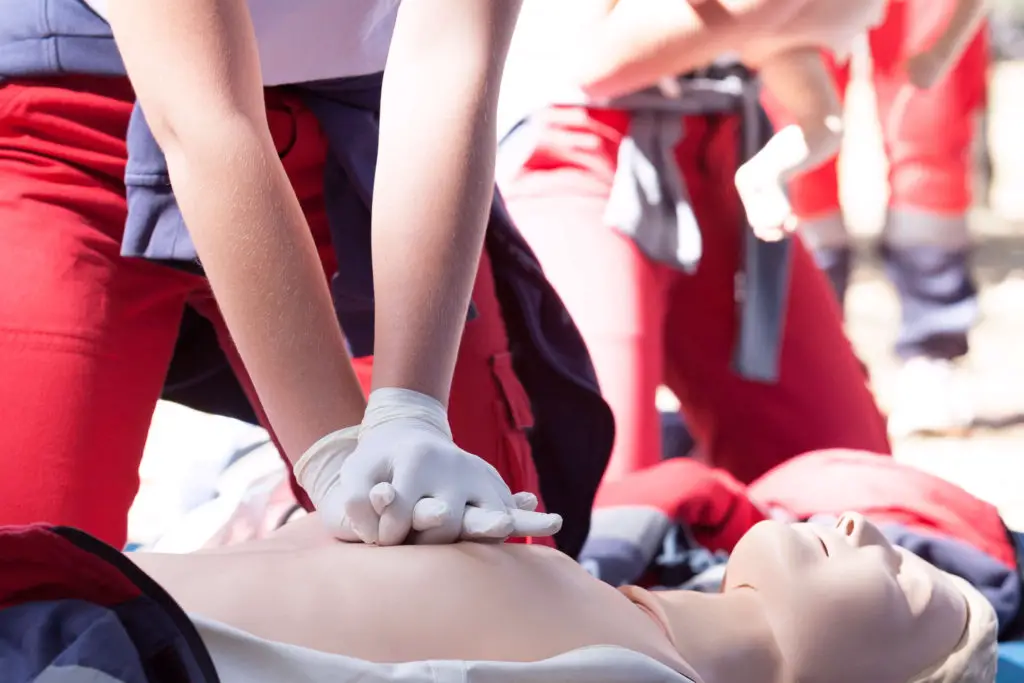4 Things To Expect At A First Aid Training Course
A first aid course is perhaps the most practical training you can sign up for. It’ll equip you with
the proper know-how to provide lifesaving support in an emergency. While many take a first aid
training course simply to comply with the requirement when applying for specific jobs, the
knowledge and skills gained from this training are invaluable.
The importance of being trained in first aid cannot be emphasized enough. It’ll equip you with
the knowledge and skills to make a significant difference in life-and-death situations.

However, you may be reluctant to take a first aid training course because you have no prior knowledge or experience. Not knowing what to expect can make you feel a bit uneasy. So, here are four things you can expect when you enroll in a first aid training course.
Table of Contents
1. Know The Fundamental Principles Of First Aid
As with any course, the fundamentals come first. You’ll learn the basic principles of first aid, which include the following:
- Preserve Life: The foremost objective of first aid is to preserve the life of the injured or sick person. They may die within minutes unless they receive proper first aid.
- Prevent Further Injury: Preventing the injured person’s condition from worsening is another crucial principle of first aid. This also includes moving the patient to a safe location to avoid further injury.
- Promote Recovery: Performing basic steps like washing the wound, applying antibiotic, and covering it with a dressing can reduce the risk of infection and promote faster recovery.
These fundamental principles shall serve as your guide when you assume the role of a first aider.
2. Learn How To Respond To Emergency Situations
The course aims to educate attendees on dealing with various emergencies. Before you apply lifesaving skills, you should know how to react to the situation. The all-important rule is to remain calm. Panicking can impair your judgment and make matters worse.
In addition, you’ll be taught how to approach the injured individual, identify potential dangers at the scene of the accident, and reduce your risk of getting injured. It’s also crucial to call for medical assistance.
When it comes to emergencies, many people quickly rush in to help but don’t know what to do. Running to the scene can lead to more harm as you also put yourself in danger. That’s why it’s vital to learn how to respond appropriately to an emergency to save other people’s lives and your own.
3. Know How To Administer CPR & Use An AED
Many people are familiar with the acronym CPR but may not know what it means. It stands for cardiopulmonary resuscitation, a vital lifesaving technique performed when someone’s heart stops beating, or their breathing is not normal. It can be used in emergencies like drowning or heart attack.
Although many have seen CPR performed on others, only a few know how to administer it correctly. It’s essential to know the following:
- What kinds of emergencies require CPR?
- How many compressions should you give between breaths?
- When do you stop giving CPR?
Aside from CPR, you’ll also learn how to use an automated external defibrillator (AED). AEDs are lifesaving devices that you can use on people experiencing sudden cardiac arrest. Knowing how to use it properly can significantly increase a person’s chance of survival.
4. Learn How To Treat Wounds
What would you do when someone accidentally steps on a nail? How would you help someone who suffered a chemical burn? What would you do if your coworker is severely injured by heavy machinery?
Regardless of severity, all wounds must be appropriately treated. In a first aid training course, you’ll learn how to treat and dress different kinds of wounds, such as bruises, scrapes, burns, and cuts.
This knowledge is critical because applying immediate and appropriate first aid can help prevent infection and hasten the healing process. However, the injured person may need to see a medical professional for further evaluation and treatment.
Final Thoughts
You can apply what you learn from a first training aid course anytime and anywhere. The skills and knowledge you gain will be helpful in emergencies and in your daily life. It gives you an awareness of dangerous situations, which can play a significant role in preventing accidents from happening. Aside from that, knowing how to administer first aid can be a good career booster. Having a first aid certificate can make you an ideal candidate for any job because it gives potential employers the impression that you’re prepared to deal with emergencies. You’ll also feel confident knowing you can help save other people’s lives!
